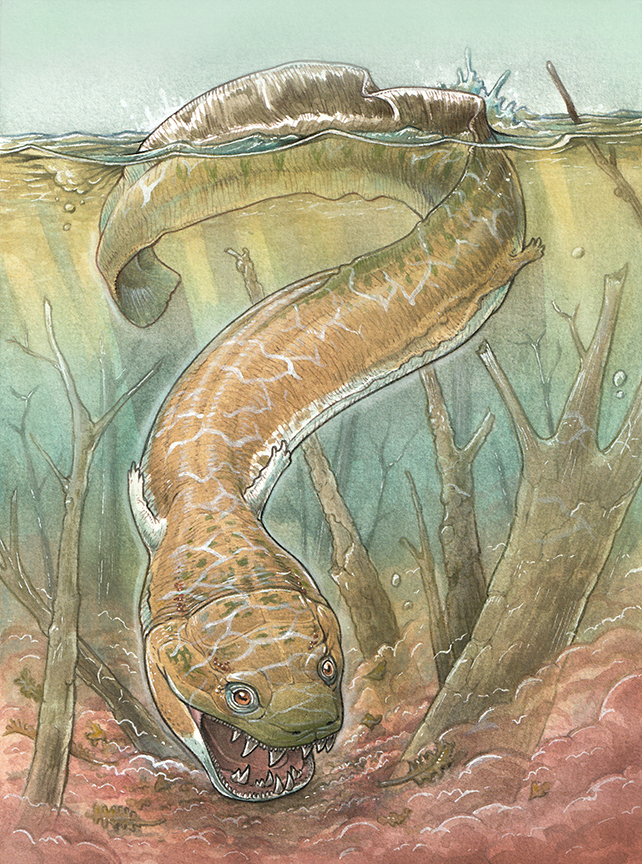(NLDO) - The Gaiasia jennyae monster looks like a giant loach, with a python head, dinosaur jaws, and legs; its skull alone is up to 60 cm long.
According to Science Alert , an international team of experts found the fossil of an unknown monster in the Gai-As planet in Namibia, perched on a rock.
The fossil includes a giant skull along with a segment of the spine, enough for scientists to recreate the creature's extremely terrifying appearance.

Gaiasia jennyae monster of the Eurypithecus period - Photo: Gabriel Lio
Subsequent analysis determined the monster belonged to an entirely new species, scientifically named Gaiasia jennyae.
According to an article published in the scientific journal Nature, this species lived about 280 million years ago, during the Diapsid period, 40 million years earlier than the time the first dinosaurs appeared on Earth.
Gaiasia jennyae existed when Namibia was much closer to Antarctica than it is today and had vast wetlands.
"It had a big, flat, toilet-shaped head that allowed it to open its mouth and suck in prey. It had giant fangs, the entire front of its mouth was just giant teeth," co-author Dr. Jason Pardo, a paleontologist at the Field Museum of Natural History (USA), described.
The unusually large interlocking canines are also one of the fossil's most interesting details, creating a unique bite that scientists can only imagine in early tetrapods.

Fossil found in Namibia - Photo: C. Marsicano
In the graphic image recreating the monster when it was alive, scientists also show the animal with a long body, with large fins along its back and belly, quite similar to a loach.
In addition, it also has four small legs, which is a sign that the monster gradually evolved to become a four-legged land animal.
This creature usually chooses the bottom of lakes and swamps as its habitat. Although dangerous, it is capable of moving quite slowly, hunting based on ambush rather than sheer speed.
The researchers say the new species could connect some dots in the fossil record and suggest that early four-legged animals like this may have covered more of the planet than previously thought.
In addition, the characteristics of this swamp monster are very different from those of its contemporaries in the equatorial region, showing how much the terrestrial biota diversified during the Diapsid period.
The Diapsid Period is the last period of the Paleozoic Era, ending about 252 million years ago. This period is followed by the Triassic Period of the Mesozoic Era.
Between these two periods, a terrible extinction event – the largest in Earth’s history – killed an estimated 96% of marine life and 70% of land vertebrates. It’s possible that the newly discovered swamp monster wasn’t spared that tragic fate.
However, this extinction event also paved the way for new species to arise during the Triassic period, including the dinosaur family.
Source: https://nld.com.vn/phat-hien-quai-vat-dam-lay-khong-lo-co-dai-hon-ca-khung-long-196240705111810476.htm























![[Photo] National Assembly Chairman attends the seminar "Building and operating an international financial center and recommendations for Vietnam"](https://vphoto.vietnam.vn/thumb/1200x675/vietnam/resource/IMAGE/2025/7/28/76393436936e457db31ec84433289f72)













































































Comment (0)